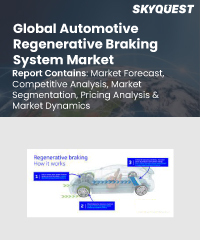
Report ID: SQMIG25A2170

Report ID:
SQMIG25A2170 |
Region:
Global |
Published Date: April, 2024
Pages:
223
|
Tables:
91 |
Figures:
76
Asia Pacific is poised for continuous growth throughout the forecast period, exhibiting the maximum growth rate. The region's assurance to increasingly stringent emission norms is expected to drive the demand for BEVs, PHEVs, and FCVs. China, in particular, played an essential role in the surge in battery demand in Asia Pacific during 2021, outstanding global electric vehicle sales in 2020 by selling over 3.3 million electric vehicles.
North America stands as the growing region in the market. The increasing demand for secure and stress-free vehicle driving, coupled with an emphasis on efficient travel, drives the adoption of regenerative braking systems in electric vehicles across the region. The government is responsible for applying autonomous vehicles by providing funding and programs.
Our industry expert will work with you to provide you with customized data in a short amount of time.
REQUEST FREE CUSTOMIZATIONWant to customize this report? This report can be personalized according to your needs. Our analysts and industry experts will work directly with you to understand your requirements and provide you with customized data in a short amount of time. We offer $1000 worth of FREE customization at the time of purchase.

Report ID: SQMIG25A2170